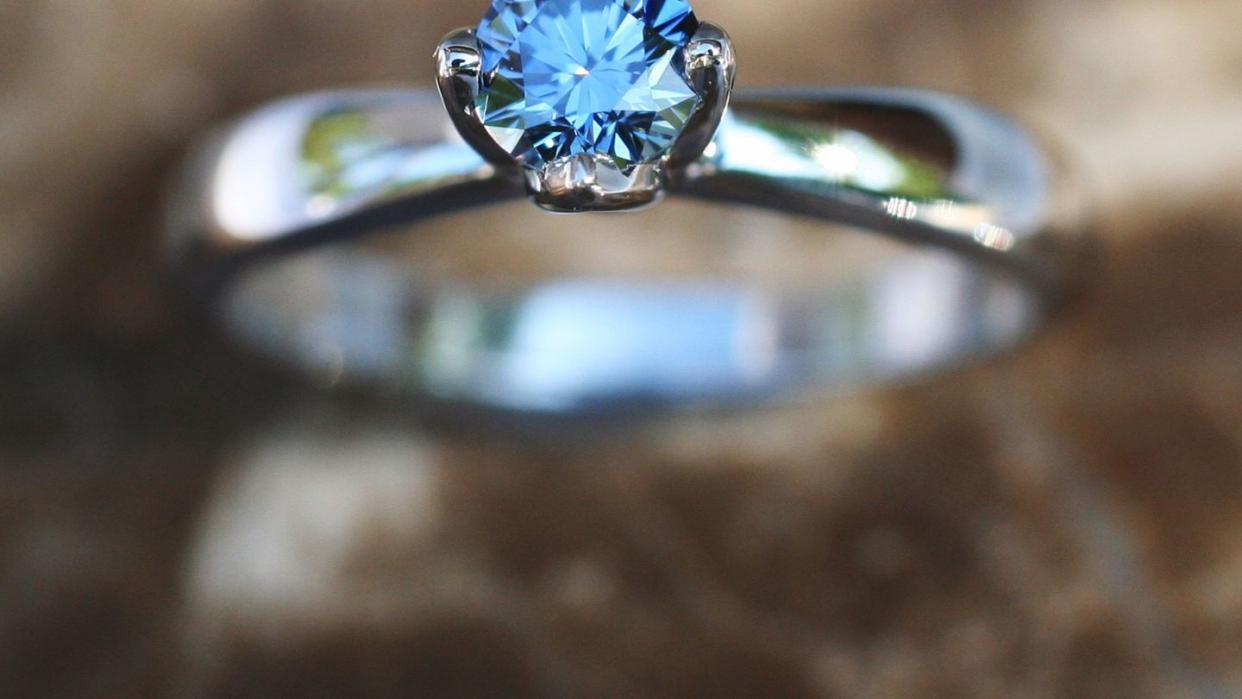Ashes to Diamonds: The Science Behind Cremation Diamonds

Lately, an unconventional method of preserving your loved one’s memory caught my eye.
Some bereaved folks today are turning to a lesser-known way to hold their loved ones close—by turning their cremated remains into a diamond that they can treasure, and perhaps wear as jewelry.
Perhaps you have a lock of an ancestor’s hair clasped in a brooch, or keep ashes in an urn, or maybe you know someone who has incorporated cremated remains into art. Those are some other examples of how, over time, people have been hanging onto tangible pieces of their dead throughout history.
And while transforming ashes into diamonds is a relatively novel approach, and still rare choice, the industry has grown over the past 20 years. The first “memorial diamond” company in the U.S., LifeGem, launched in 2001, and now there are so many companies doing that work that you can look up articles such as “The Top 5 Cremation Diamond Companies Turning Ashes into Diamonds.”
But how this is actually done is quite fascinating. The process involves a different application of the machines used to pioneer lab-grown diamonds, itself a burgeoning field that gives people an alternative to mined gems. Pure carbon extracted from cremation ashes undergoes extremely high pressure and temperature, replicating the Earth’s natural diamond engine, only at ultra-high speed.
When it comes to the creation of natural diamonds, it begins 100 to more than 1,000 miles below the Earth’s surface, where the mantle experiences temperatures of more than 2,200 degrees Fahrenheit and about 725,000 pounds of pressure per square inch, making your pressure cooker at home look like a child’s toy. Carbon atoms need to be in these conditions for at least 1 billion years before they jam together into their tightest possible bond, each carbon atom joining with four other carbon atoms. As the pattern repeats, the crystal grows into rough diamonds. When our planet hurls them upward with volcanic eruptions originating deep within the mantle, they land in the Earth’s crust.
While it takes our planet a billion years to transform carbon into diamonds, memorial diamond companies turn out diamonds within just months. The first step is to extract carbon from the remains. Once a body is cremated, about 1–4 percent of the remaining ash is made of carbon. It’s not much, but it’s all that’s needed to seed the eventual diamond.
The company Lonité recommends providing a half cup of ashes or 10g of hair to start the process. The next step converts this carbon powder into graphite, the dark gray mineralized carbon used in pencils. A diamond is the result of pressing refined, pure graphite under high heat and pressure to mimic natural forces as closely as possible—typically the graphite is transformed inside a “growth cell,” a metal alloy. The cell is placed under 850,000 pounds per square inch of pressure, at about 2,500 degrees Fahrenheit. That’s like having the weight of three and a half blue whales pressing down on every inch. The heat nearly matches the inferno of the Earth’s mantle, which is about three times as hot as a pizza oven—and nearly twice as hot as a cremation oven.
A diamond “seed” the size of a sand grain also encourages diamond growth. As the carbon atoms in the graphite gradually rearrange themselves, the seed inside the growth cell provides the first crystals an attachment point. The longer the graphite is kept under these high-pressure, high-temperature conditions, the larger the eventual diamond becomes. Once finished, a diamond cutter adds the facets that make it sparkle.
Keep in mind that the process may require additional carbon to be added to the carbon isolated from your loved one. The company Algordanza in Switzerland claims it’s the only one whose diamonds are made wholly from your loved one’s remains—this can also include hair, which is 45 percent carbon. Some companies’ processes need to include additional generic carbon, because “miniscule impurities” can remain in the carbon extracted from a cremation. In the end, personal carbon makes up 10–15 percent of the carbon used to create most memorial diamonds, according to the company EverDear; the result will be a more brilliant gemstone without the impurities.
The customer cost of a cremation diamond ranges from $750–$20,000, according to the Cremation Institute. Based on how far removed your loved one is from the final product, I’m not sure I’d go the memorial diamond route, no matter how stunning it appears.
You Might Also Like
